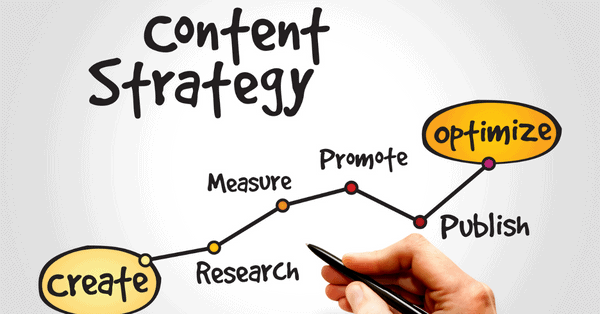Jessica, President and CEO of SW Marketing and Consulting. Graduated from the University of Phoenix with a Bachelor of Science in Business Marketing and a master of Business Administration. Fluent in English, Spanish, French and Portuguese, has paved ways through her career in the Marketing field.
Latest posts by Jessica Jordan (see all)
- Facebook Ads Manager VS Boosted Posts – Difference and Use Cases - March 6, 2024
- What is Subliminal Advertising? - February 22, 2024
- What Type of Google Ads Campaign Fits Your Brand? - February 12, 2024
Want to dominate your market? Having a strong online presence is a key for any business to grow and succeed these days. To do that, you’ll need a powerful digital marketing plan!
A workable and cost-effective digital marketing plan is easier said than done; with so many digital channels and strategies available, it can easily get overwhelming.
In this blog, we will break down the essential components of a powerful digital marketing plan and provide tips and insights to help you develop a strategy that connects with your target audience, achieves your business goals, and sets you apart from the competition.
 First and foremost, you need to understand your target audience and the market in which you operate. Start by identifying your target audience. Who are they? Which demographics do they belong to, interests, buying behaviors, and overall preferences? You can conduct your own survey or use tools such as Google trends, Answer the public or Heartbeat AI.
Study your competitors’ digital marketing footprints. What are they doing well? What are their weaknesses? How can you differentiate yourself from them? Are they hiring an expert advertising agency? This information will help you create a unique and competitive digital marketing campaign.
Once you’ve gathered enough data, analyze it to identify patterns and trends that you can use in your campaigns.
Step 2: Establish SMART goals
First and foremost, you need to understand your target audience and the market in which you operate. Start by identifying your target audience. Who are they? Which demographics do they belong to, interests, buying behaviors, and overall preferences? You can conduct your own survey or use tools such as Google trends, Answer the public or Heartbeat AI.
Study your competitors’ digital marketing footprints. What are they doing well? What are their weaknesses? How can you differentiate yourself from them? Are they hiring an expert advertising agency? This information will help you create a unique and competitive digital marketing campaign.
Once you’ve gathered enough data, analyze it to identify patterns and trends that you can use in your campaigns.
Step 2: Establish SMART goals
 These goals should define your overall business objectives and help you measure the success of your campaigns.
Specific: Define specific objectives for your digital marketing plan. For example, increasing website traffic, improving email open rates, or generating more leads.
Measurable: Establish measurable goals that can be quantified in numbers. Set benchmarks and metrics to measure your progress and success. This will allow you to track your progress and make adjustments to your strategy if necessary. For example, Click-through rate and Return on ads spent.
Achievable: Determine the resources and budget you need to execute your digital marketing plan effectively. Then set realistic goals that can be achieved within the resources and budget available. Do not set goals that are too ideal, as this can often lead to frustration and disappointment.
Relevant: Your digital marketing plan should support your business goals and objectives. Ensure that your goals are relevant to your target audience and the industry you are operating.
Time-bound: Be sure to establish a deadline for achieving your goals, and track your progress regularly. This is important to avoid getting too relaxed or becoming impatient during the course of implementation.
Step 3: Choose the right digital channels
These goals should define your overall business objectives and help you measure the success of your campaigns.
Specific: Define specific objectives for your digital marketing plan. For example, increasing website traffic, improving email open rates, or generating more leads.
Measurable: Establish measurable goals that can be quantified in numbers. Set benchmarks and metrics to measure your progress and success. This will allow you to track your progress and make adjustments to your strategy if necessary. For example, Click-through rate and Return on ads spent.
Achievable: Determine the resources and budget you need to execute your digital marketing plan effectively. Then set realistic goals that can be achieved within the resources and budget available. Do not set goals that are too ideal, as this can often lead to frustration and disappointment.
Relevant: Your digital marketing plan should support your business goals and objectives. Ensure that your goals are relevant to your target audience and the industry you are operating.
Time-bound: Be sure to establish a deadline for achieving your goals, and track your progress regularly. This is important to avoid getting too relaxed or becoming impatient during the course of implementation.
Step 3: Choose the right digital channels
 Start with at least one digital channel, and select which is the most effective for reaching your target audience. Usually, this is where they usually browse or access things like social media, email marketing, blogs, podcasts, and more. Each channel has its own strengths and weaknesses, so choose the ones that align with your goals and audience based on your market research.
Step 4: Develop a Content Strategy
Start with at least one digital channel, and select which is the most effective for reaching your target audience. Usually, this is where they usually browse or access things like social media, email marketing, blogs, podcasts, and more. Each channel has its own strengths and weaknesses, so choose the ones that align with your goals and audience based on your market research.
Step 4: Develop a Content Strategy
 Use a voice and language that resonates with your target audience and aligns with your brand. Your messaging should be consistent across all your digital marketing channels. Then create a content calendar to plan out your content in advance to ensure that you’re consistently delivering valuable and relevant content to your audience. You can use a tool like hootsuite, Airtable or Sked social.
Step 5: Implementation
Use a voice and language that resonates with your target audience and aligns with your brand. Your messaging should be consistent across all your digital marketing channels. Then create a content calendar to plan out your content in advance to ensure that you’re consistently delivering valuable and relevant content to your audience. You can use a tool like hootsuite, Airtable or Sked social.
Step 5: Implementation
 After all the preparation, it’s finally time to execute your digital marketing plan and track your results. Use market analytics tools to measure the success of your campaigns or adjust your strategy as needed. Usually, the digital channels have their own platform to track key performance indicators (KPIs) such as website traffic, leads generated, conversion rates, and more.
Step 6: Optimization
After all the preparation, it’s finally time to execute your digital marketing plan and track your results. Use market analytics tools to measure the success of your campaigns or adjust your strategy as needed. Usually, the digital channels have their own platform to track key performance indicators (KPIs) such as website traffic, leads generated, conversion rates, and more.
Step 6: Optimization
 Digital marketing is an ongoing process. Your competition will not sit around and watch you dominate them without a fight. Continuously optimize your campaigns based on the data you collect, and stay up-to-date with the latest trends and best practices in the industry.
Digital marketing is an ongoing process. Your competition will not sit around and watch you dominate them without a fight. Continuously optimize your campaigns based on the data you collect, and stay up-to-date with the latest trends and best practices in the industry.
Step-by-step guide to planning your successful campaign
A powerful digital marketing plan has several components that work together to bridge that gap between you and your target audience. Follow these steps to make sure you cover all the possibilities before even starting the campaign. Step 1: Data Gathering First and foremost, you need to understand your target audience and the market in which you operate. Start by identifying your target audience. Who are they? Which demographics do they belong to, interests, buying behaviors, and overall preferences? You can conduct your own survey or use tools such as Google trends, Answer the public or Heartbeat AI.
Study your competitors’ digital marketing footprints. What are they doing well? What are their weaknesses? How can you differentiate yourself from them? Are they hiring an expert advertising agency? This information will help you create a unique and competitive digital marketing campaign.
Once you’ve gathered enough data, analyze it to identify patterns and trends that you can use in your campaigns.
Step 2: Establish SMART goals
First and foremost, you need to understand your target audience and the market in which you operate. Start by identifying your target audience. Who are they? Which demographics do they belong to, interests, buying behaviors, and overall preferences? You can conduct your own survey or use tools such as Google trends, Answer the public or Heartbeat AI.
Study your competitors’ digital marketing footprints. What are they doing well? What are their weaknesses? How can you differentiate yourself from them? Are they hiring an expert advertising agency? This information will help you create a unique and competitive digital marketing campaign.
Once you’ve gathered enough data, analyze it to identify patterns and trends that you can use in your campaigns.
Step 2: Establish SMART goals
 These goals should define your overall business objectives and help you measure the success of your campaigns.
Specific: Define specific objectives for your digital marketing plan. For example, increasing website traffic, improving email open rates, or generating more leads.
Measurable: Establish measurable goals that can be quantified in numbers. Set benchmarks and metrics to measure your progress and success. This will allow you to track your progress and make adjustments to your strategy if necessary. For example, Click-through rate and Return on ads spent.
Achievable: Determine the resources and budget you need to execute your digital marketing plan effectively. Then set realistic goals that can be achieved within the resources and budget available. Do not set goals that are too ideal, as this can often lead to frustration and disappointment.
Relevant: Your digital marketing plan should support your business goals and objectives. Ensure that your goals are relevant to your target audience and the industry you are operating.
Time-bound: Be sure to establish a deadline for achieving your goals, and track your progress regularly. This is important to avoid getting too relaxed or becoming impatient during the course of implementation.
Step 3: Choose the right digital channels
These goals should define your overall business objectives and help you measure the success of your campaigns.
Specific: Define specific objectives for your digital marketing plan. For example, increasing website traffic, improving email open rates, or generating more leads.
Measurable: Establish measurable goals that can be quantified in numbers. Set benchmarks and metrics to measure your progress and success. This will allow you to track your progress and make adjustments to your strategy if necessary. For example, Click-through rate and Return on ads spent.
Achievable: Determine the resources and budget you need to execute your digital marketing plan effectively. Then set realistic goals that can be achieved within the resources and budget available. Do not set goals that are too ideal, as this can often lead to frustration and disappointment.
Relevant: Your digital marketing plan should support your business goals and objectives. Ensure that your goals are relevant to your target audience and the industry you are operating.
Time-bound: Be sure to establish a deadline for achieving your goals, and track your progress regularly. This is important to avoid getting too relaxed or becoming impatient during the course of implementation.
Step 3: Choose the right digital channels
 Start with at least one digital channel, and select which is the most effective for reaching your target audience. Usually, this is where they usually browse or access things like social media, email marketing, blogs, podcasts, and more. Each channel has its own strengths and weaknesses, so choose the ones that align with your goals and audience based on your market research.
Step 4: Develop a Content Strategy
Start with at least one digital channel, and select which is the most effective for reaching your target audience. Usually, this is where they usually browse or access things like social media, email marketing, blogs, podcasts, and more. Each channel has its own strengths and weaknesses, so choose the ones that align with your goals and audience based on your market research.
Step 4: Develop a Content Strategy
 Use a voice and language that resonates with your target audience and aligns with your brand. Your messaging should be consistent across all your digital marketing channels. Then create a content calendar to plan out your content in advance to ensure that you’re consistently delivering valuable and relevant content to your audience. You can use a tool like hootsuite, Airtable or Sked social.
Step 5: Implementation
Use a voice and language that resonates with your target audience and aligns with your brand. Your messaging should be consistent across all your digital marketing channels. Then create a content calendar to plan out your content in advance to ensure that you’re consistently delivering valuable and relevant content to your audience. You can use a tool like hootsuite, Airtable or Sked social.
Step 5: Implementation
 After all the preparation, it’s finally time to execute your digital marketing plan and track your results. Use market analytics tools to measure the success of your campaigns or adjust your strategy as needed. Usually, the digital channels have their own platform to track key performance indicators (KPIs) such as website traffic, leads generated, conversion rates, and more.
Step 6: Optimization
After all the preparation, it’s finally time to execute your digital marketing plan and track your results. Use market analytics tools to measure the success of your campaigns or adjust your strategy as needed. Usually, the digital channels have their own platform to track key performance indicators (KPIs) such as website traffic, leads generated, conversion rates, and more.
Step 6: Optimization
 Digital marketing is an ongoing process. Your competition will not sit around and watch you dominate them without a fight. Continuously optimize your campaigns based on the data you collect, and stay up-to-date with the latest trends and best practices in the industry.
Digital marketing is an ongoing process. Your competition will not sit around and watch you dominate them without a fight. Continuously optimize your campaigns based on the data you collect, and stay up-to-date with the latest trends and best practices in the industry.
